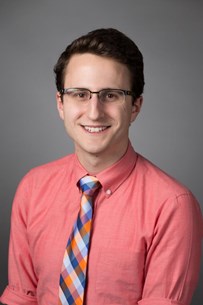Meeting
2022 ASCO Annual Meeting

Emory University, Atlanta, GA
James Edward Bates , Christina Henson
Background: Rural counties have a decreased incidence of cancer relatively to non-rural counties; however, they have higher death rates from cancer. This disparity in death rates is worsening. Patients in rural areas face significant barriers to accessing oncologic care – limited access to oncologic providers and significant travel distances to treatment chief among them. We aimed to assess trends in geographic distribution of medical and radiation oncologists to ascertain trends in access to oncologic specialists in rural areas. Methods: We used the Medicare Physician & Other Practitioners database published by the Centers for Medicare & Medicaid Services from 2013 and 2019 (the earliest and latest available) to identify radiation oncologists and medical oncologists (including hematology/oncology) based on the Provider Type field. We used the Rural Urban Commuting Area Codes as defined by the US Department of Agriculture; rural was defined as non-metropolitan areas with a < 30% commuting flow to a large urban center consistent with the definition from the WWAMI Rural Health Research Center. The US Health Resources & Services Administration, using a similar definition, defines 19.7% of the US population as rural. Results: In 2013, we identified 10,440 medical oncologists and 4,292 radiation oncologists in the United States. 7.6% of medical oncologists and 8.9% of radiation oncologists practiced in rural areas. In 2019, 7.4% of medical oncologists and 8.5% of radiation oncologists practiced in rural areas (Table). There were 1,430 more medical oncologists practicing in 2019 as compared to 2013; only 83 (5.8%) practice in a rural area. There were 436 additional radiation oncologists with only 21 (4.8%) practicing in a rural area. Growth in both medical oncologists (χ2 = 8.47, p = 0.02) and radiation oncologists (χ2 = 8.47, p = 0.004) was more likely to be in urban than rural areas. Conclusions: While disparities in oncologist distribution along the rural-urban continuum are well known, we establish that these disparities are becoming more pronounced despite increasing awareness. This raises concern that disparities in cancer outcomes in rural patients will continue to worsen. Alternative strategies to increases access to cancer care in rural areas are critical.
| Urban (n, %) | Rural (n, %) | |
|---|---|---|
| 2013 | ||
| Medical Oncologists | 9647 (92.4%) | 793 (7.6%) |
| Radiation Oncologists | 3910 (91.1%) | 382 (8.9%) |
| 2019 | ||
| Medical Oncologists | 10994 (92.6%) | 876 (7.4%) |
| Radiation Oncologists | 4325 (91.5%) | 403 (8.5%) |
Disclaimer
This material on this page is ©2024 American Society of Clinical Oncology, all rights reserved. Licensing available upon request. For more information, please contact licensing@asco.org
2022 ASCO Annual Meeting
Publication Only
Health Services Research and Quality Improvement
Quality Care/Health Services Research
Access to Care
J Clin Oncol 40, 2022 (suppl 16; abstr e18521)
10.1200/JCO.2022.40.16_suppl.e18521
e18521
Abstract Disclosures
2023 ASCO Quality Care Symposium
First Author: Bruno T Scodari
2023 ASCO Quality Care Symposium
First Author: Sarah Cornelius
2023 ASCO Quality Care Symposium
First Author: Jeffrey Franks
2023 ASCO Annual Meeting
First Author: Alexandrina Balanean